By 1930 it was obvious that the popularity of Mickey Mouse was only growing. As the studio met with great success Disney continued to upgrade the production value of the animation and introduce greater complexity and attention to detail. Watching these shorts now it’s easy to track the progress made from year to year, or even month to month, as the artists at the studio developed their skill and technical prowess.
Rising Success
Let’s take a look at a collection of artwork from this time period:
An advertisement placed in the Los Angeles Times in 1931 thanking the press for the great coverage Mickey Mouse had been receiving:
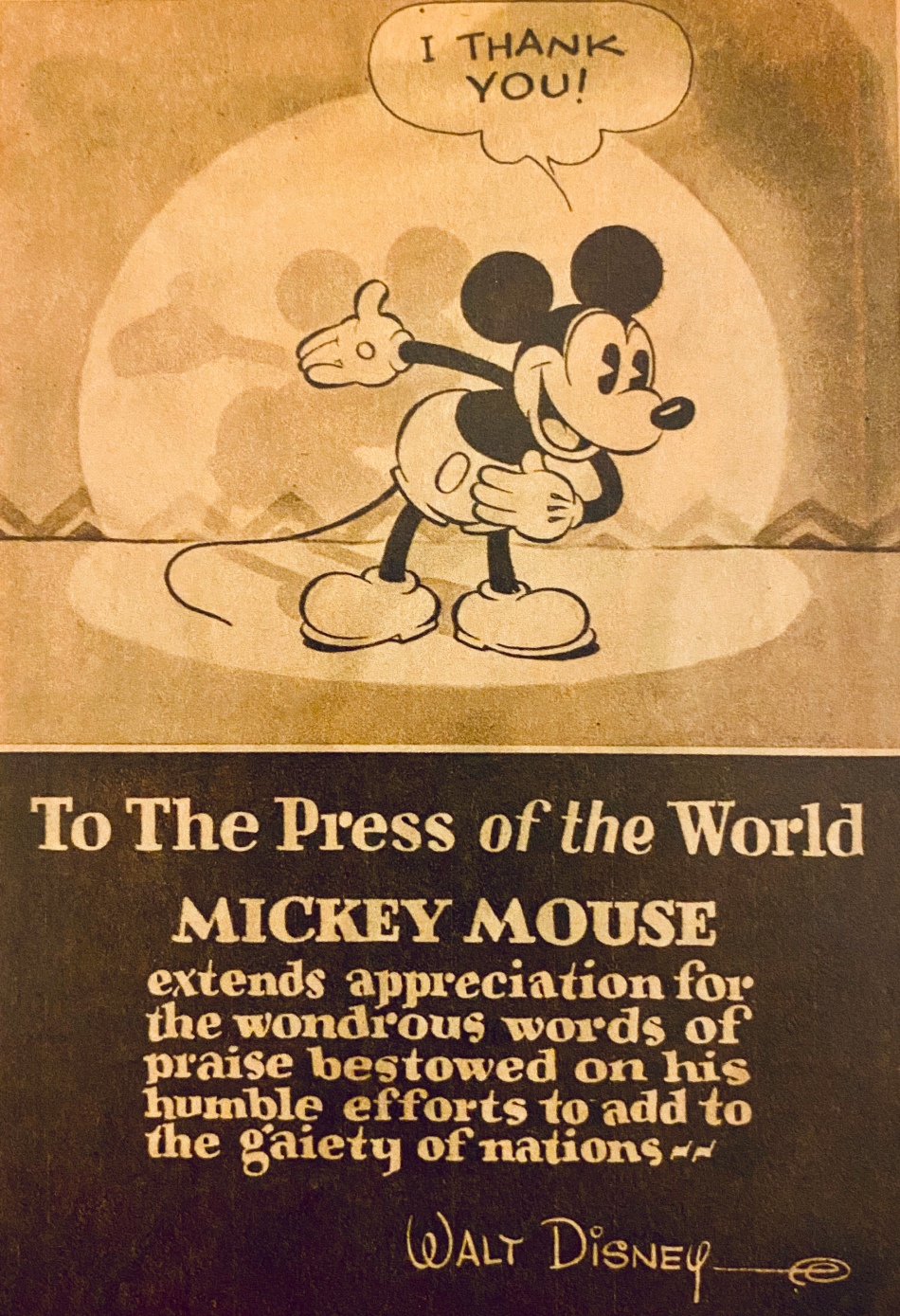
In 1931 a local Pasadena movie theater highlights Mickey Mouse as a main attraction:
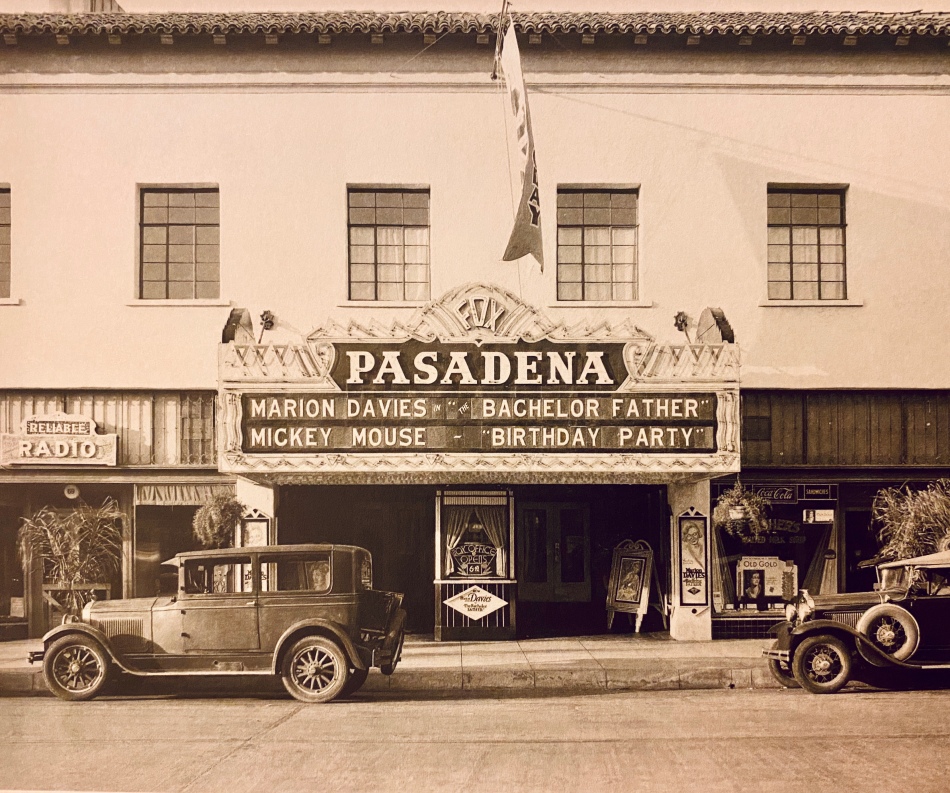
Walt Disney poses in the driveway of the Hyperion Avenue studio with performer Toots Novelle costumed as Mickey sitting on top of an Austin 7:
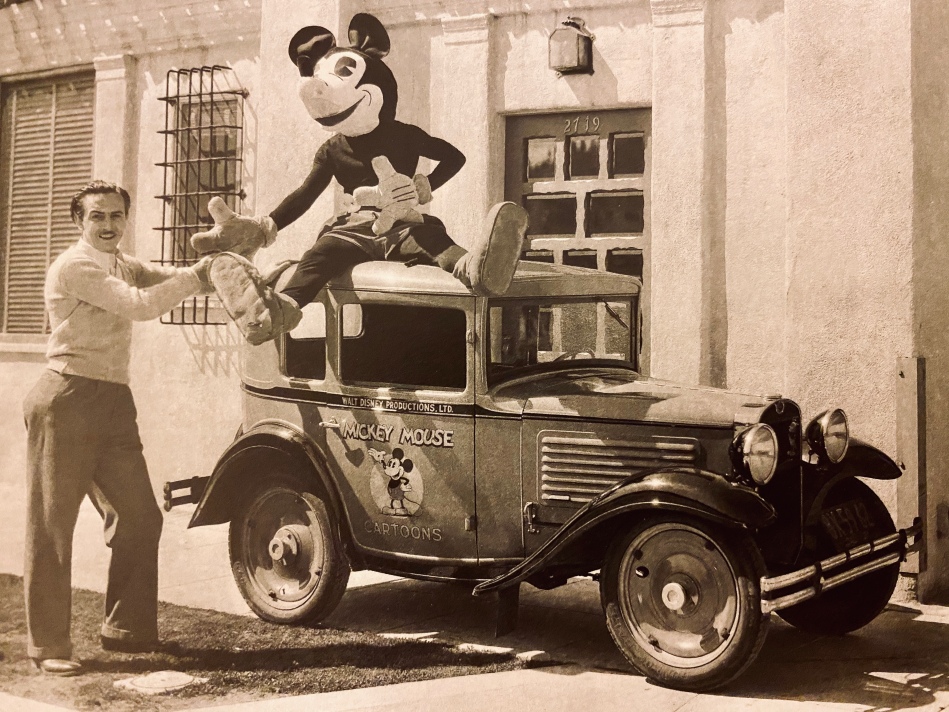
In 1933 the Einson-Freeman Co. produced Mickey and Minnie masks that were probably never intended to be disturbing. But they are:
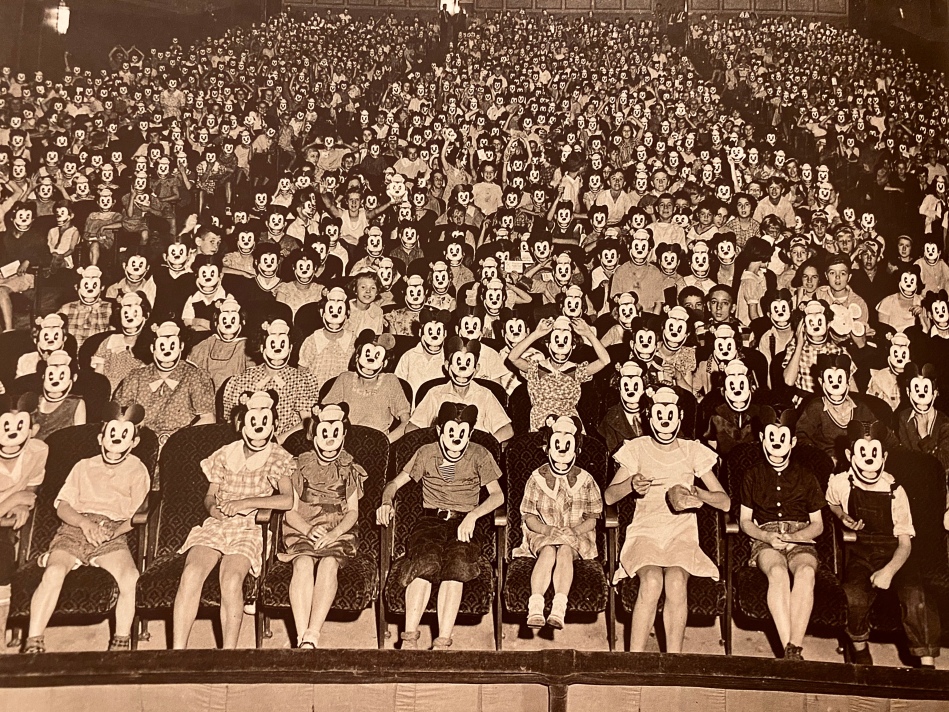
Mickey Mouse was popular enough to be featured in the Macy’s Thanksgiving day parade starting in 1934:
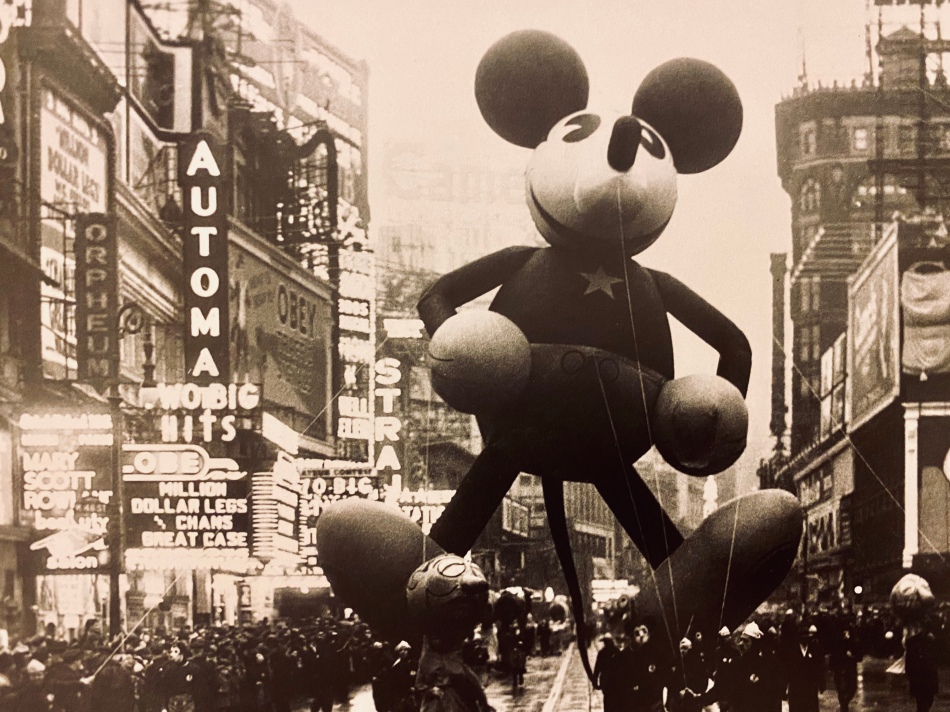
The start of Mickey merchandise provided a lucrative diversification of revenue sources for the studio:
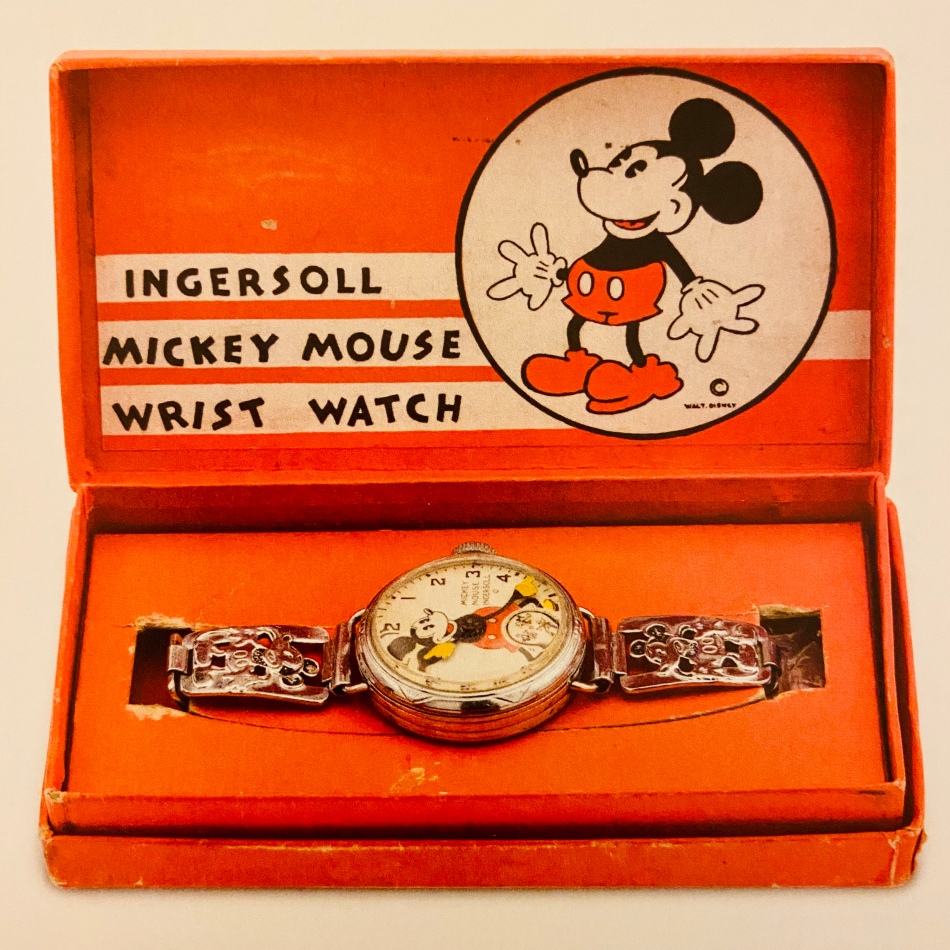
Popular Mickey Mouse music started showing up in record stores. This Picture Disc speciality record is from 1934 and features artwork by Mickey comic strip artist Floyd Gottfredson:
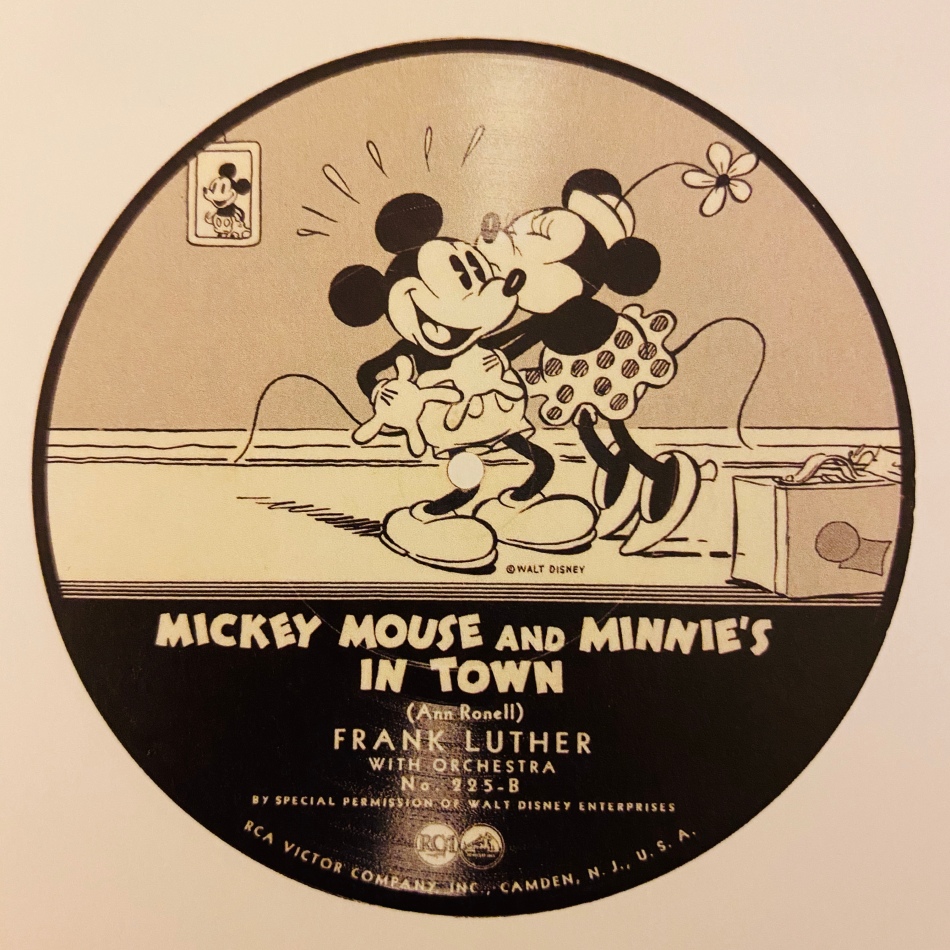
Speaking of Mickey Mouse newspaper comic strips: Floyd Gottfredson was hired on at the studio in late 1929 as an animator but was assigned to work on the fledgling Mickey comic strip in early 1930. Gottfredson expressed a desire to get back to the animation department but ended up continuing work on the comics… for the next thirty+ years!
Throughout the 1930s the newspaper comic strip Mickey was possibly even more important to maintaining the character’s popularity than the animated shorts. Certainly it was the most frequent representation of Mickey that the public consumed; a Mickey short appeared in theaters perhaps once a month while the comic appeared in the newspapers every day:
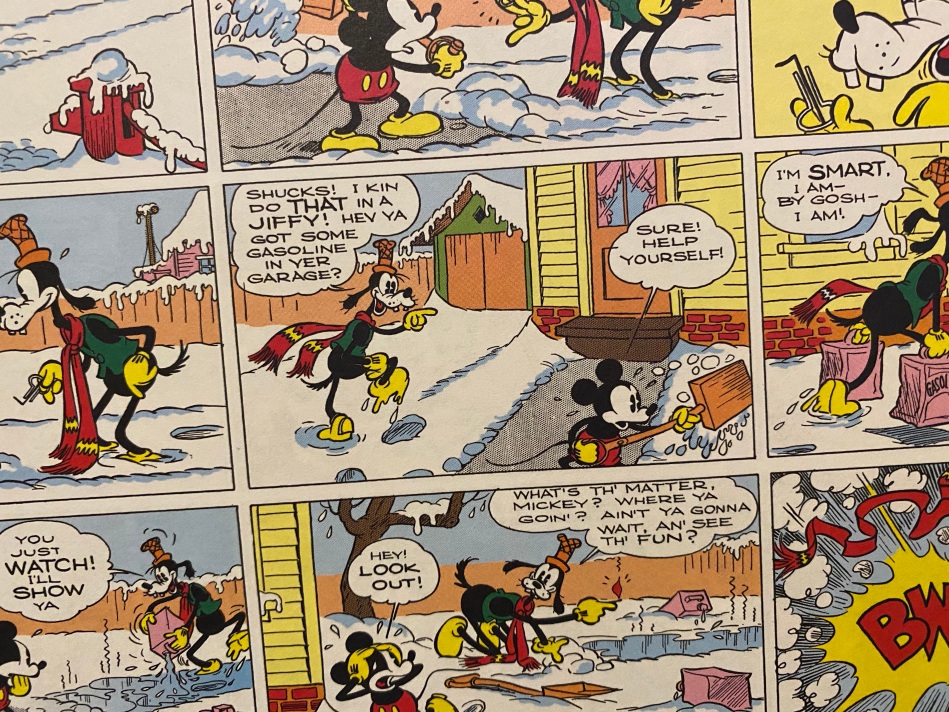
Here are some script pages from 1931. At this time scripts for Disney shorts combined written descriptions of action and technical direction with story sketches that were often pasted on the page. This format would eventually evolve into the practice of story-boarding that is still used by animation and live action film makers to this day:
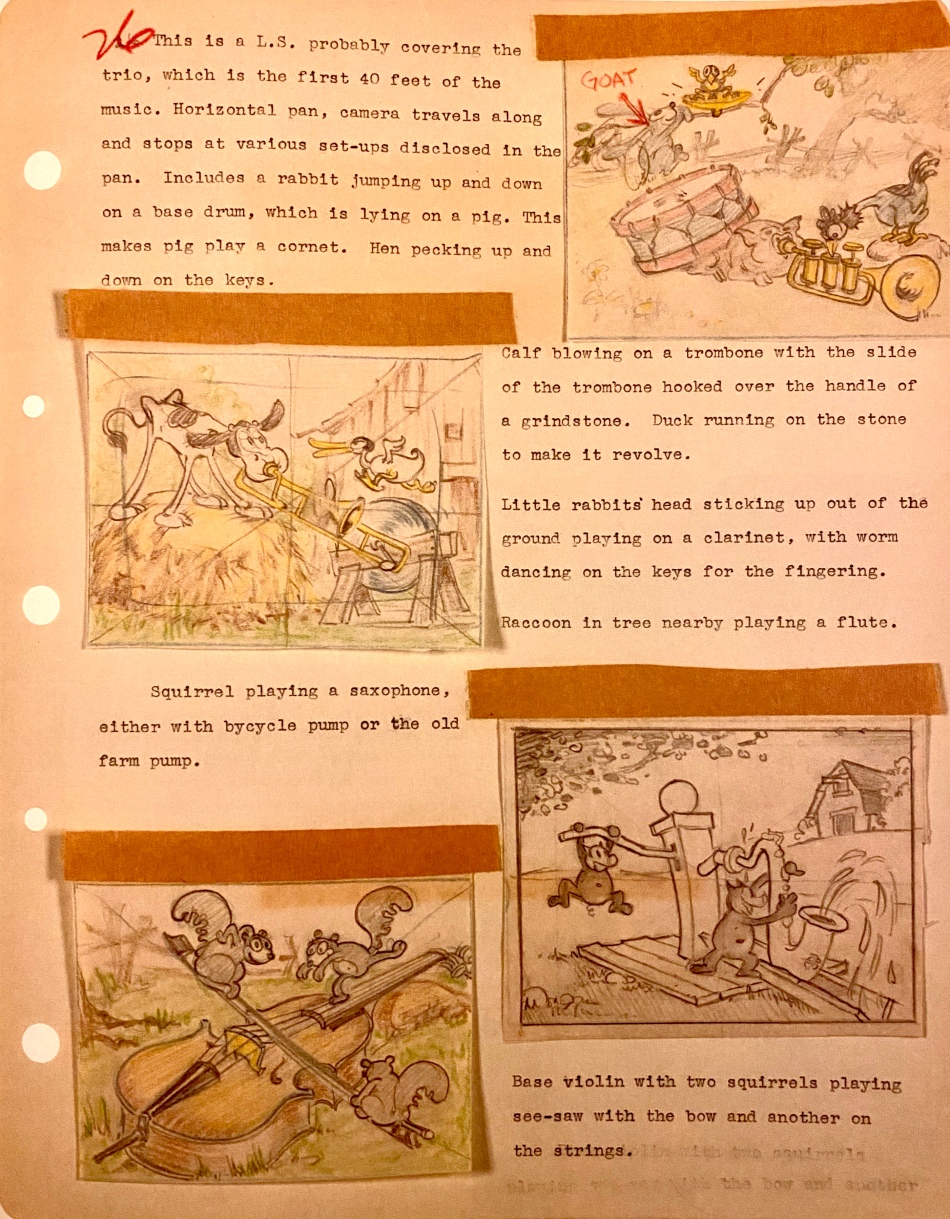
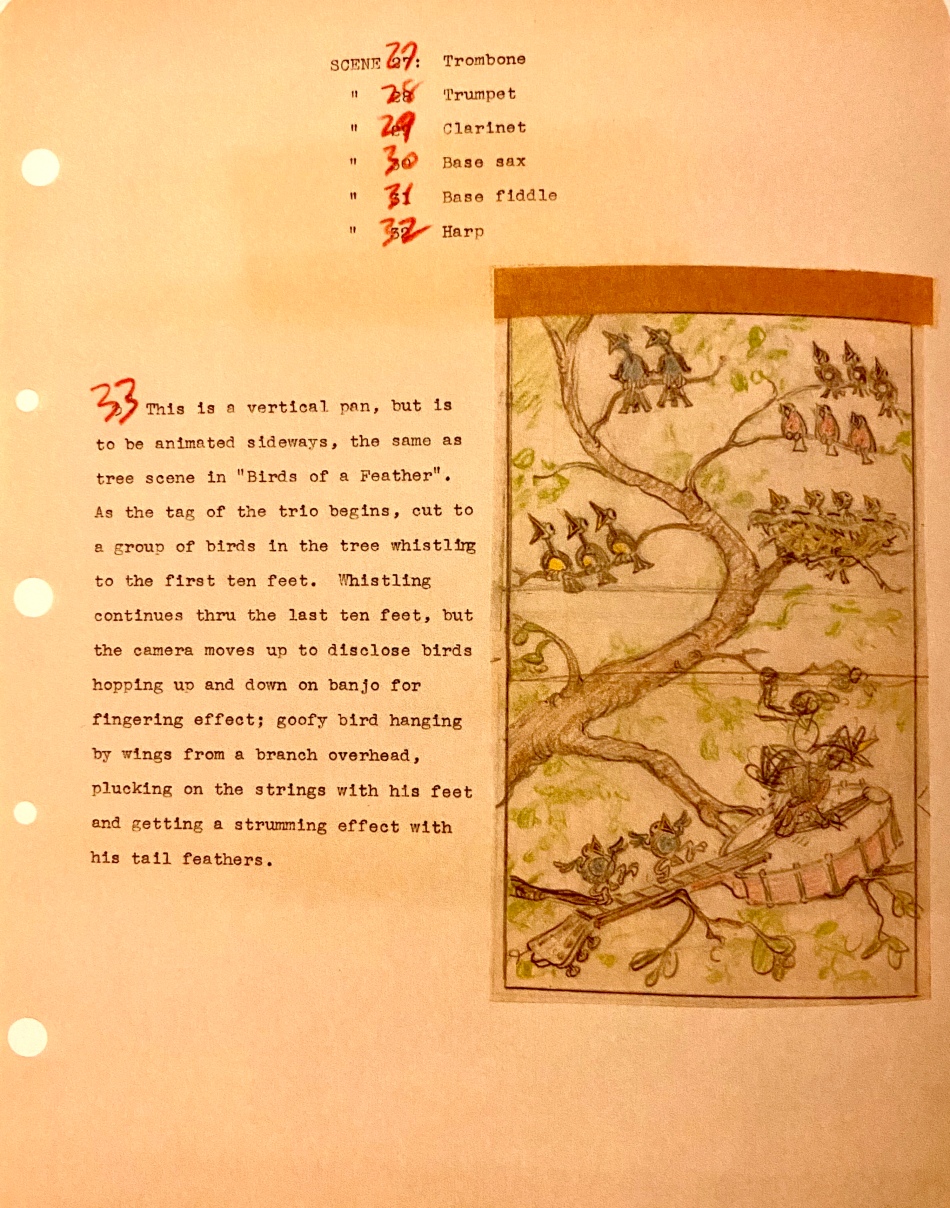
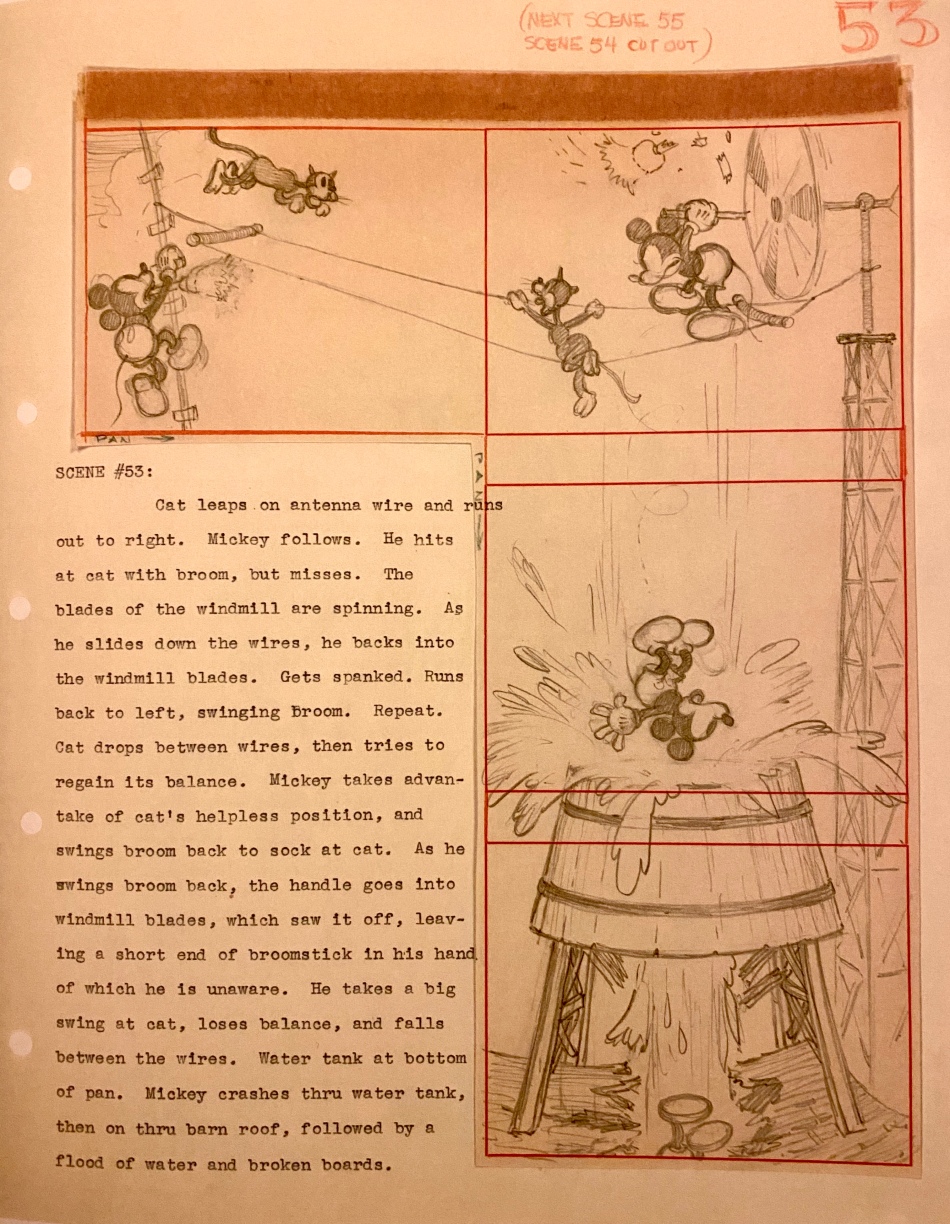
A story sketch for The Beach Party (1931) depicts a soon-to-be-disturbed picnic:

The debut of a character called Dippy Dawg in Mickey’s Revue (1932) was already being called the Goof by the story artists:
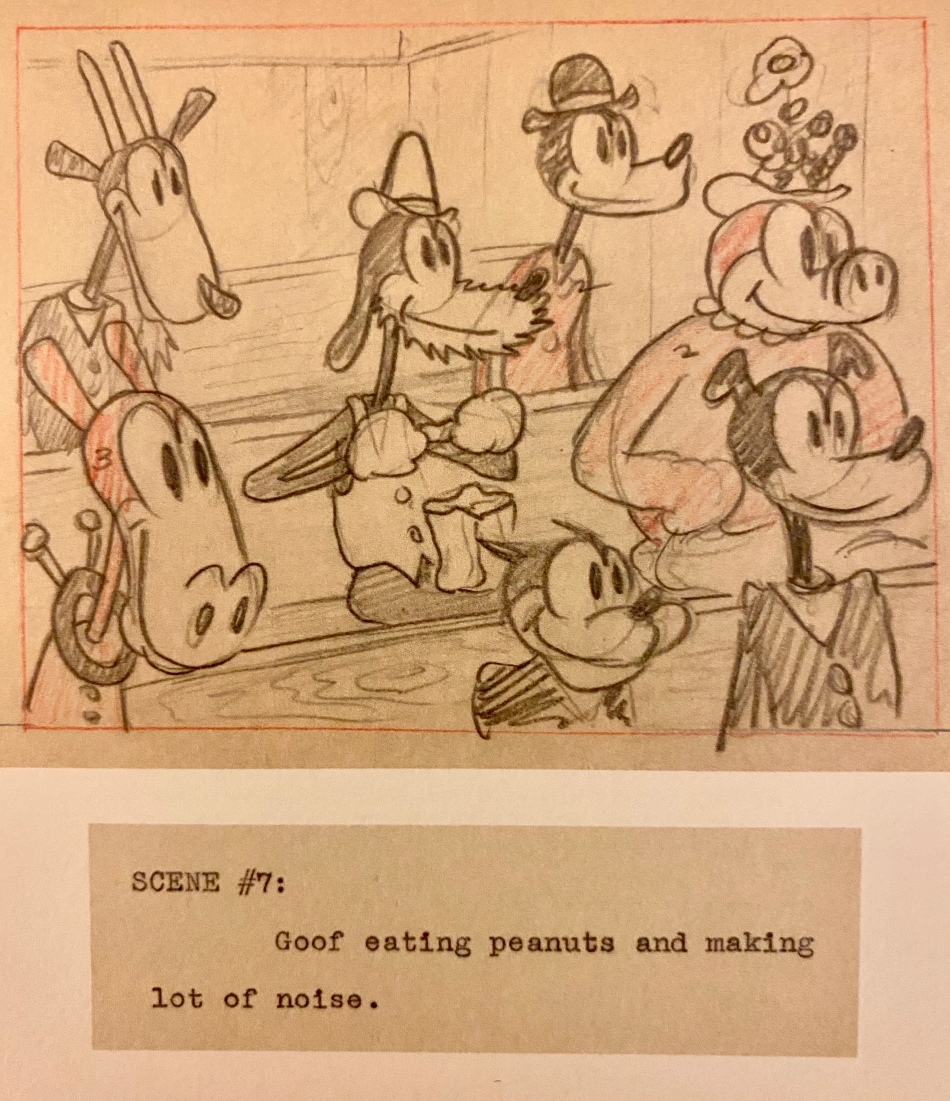
The poster for The Klondike Kid (1932):

By 1930 it was obvious that the popularity of Mickey Mouse was only growing. As the studio met with great success Disney continued to upgrade the production value of the animation and introduce greater complexity and attention to detail. Watching these shorts now it’s easy to track the progress made from year to year, or even month to month, as the artists at the studio developed their skill and technical prowess.
Rising Success
Let’s take a look at a collection of artwork from this time period:
An advertisement placed in the Los Angeles Times in 1931 thanking the press for the great coverage Mickey Mouse had been receiving:
In 1931 a local Pasadena movie theater highlights Mickey Mouse as a main attraction:
Walt Disney poses in the driveway of the Hyperion Avenue studio with performer Toots Novelle costumed as Mickey sitting on top of an Austin 7:
In 1933 the Einson-Freeman Co. produced Mickey and Minnie masks that were probably never intended to be disturbing. But they are:
Mickey Mouse was popular enough to be featured in the Macy’s Thanksgiving day parade starting in 1934:
The start of Mickey merchandise provided a lucrative diversification of revenue sources for the studio:
Popular Mickey Mouse music started showing up in record stores. This Picture Disc speciality record is from 1934 and features artwork by Mickey comic strip artist Floyd Gottfredson:
Speaking of Mickey Mouse newspaper comic strips: Floyd Gottfredson was hired on at the studio in late 1929 as an animator but was assigned to work on the fledgling Mickey comic strip in early 1930. Gottfredson expressed a desire to get back to the animation department but ended up continuing work on the comics… for the next thirty+ years!
Throughout the 1930s the newspaper comic strip Mickey was possibly even more important to maintaining the character’s popularity than the animated shorts. Certainly it was the most frequent representation of Mickey that the public consumed; a Mickey short appeared in theaters perhaps once a month while the comic appeared in the newspapers every day:
Here are some script pages from 1931. At this time scripts for Disney shorts combined written descriptions of action and technical direction with story sketches that were often pasted on the page. This format would eventually evolve into the practice of story-boarding that is still used by animation and live action film makers to this day:
A story sketch for The Beach Party (1931) depicts a soon-to-be-disturbed picnic:
The debut of a character called Dippy Dawg in Mickey’s Revue (1932) was already being called the Goof by the story artists:
The poster for The Klondike Kid (1932):
Share this: